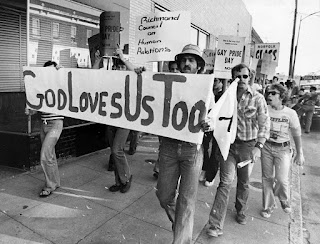How and when do people strategically deploy identities?
Movements may sometimes root themselves in the celebration of differences or similarities with the majority dialogue depending on a variety of situational drivers. Mary Bernstein seeks to illuminate the mechanisms movements use when deciding between the celebration or suppression of difference in her article Celebration and Suppression: The Strategic Uses of Identity by the Lesbian and Gay Movement. Bernstein concludes that “the structure of social movement organizations, access to the polity (Tilly 1978), and the type of opposition” all influence this decision (532).
These drivers change overtime requiring flexibility in the approach a movement takes to achieve its objectives. For example, the author explains that the lesbian and gay movement experienced a documented shift over time from a protest for cultural transformation to an increased focus on political rights. I agree with Bernstein’s conclusion that their internal and external context crafts movements. She identifies “political access, movement interactions with opposing movements and with the state, as well as of interactions among groups within activist communities” as drivers of a movement’s direction (560). These relational parameters also relate to the strategic and subconscious deployment of individual identities. Situational factors drive the formation of personal identities, and they also call forth action based on these identities.
While behavior is a concrete example we can reference to analyze the strategic deployment of identity, internal processing is also impactful. It is not only through protest and social causes that people exercise their identity. Everyday choices and perspectives, both conscious and unconscious, are assembled based on our identity background.
While it is a little more complicated to chart, I would argue that these are also examples of the strategic deployment of identity. Our thought processes and everyday decisions operate on a feedback loop. They either confirm or reject certain beliefs we hold, which shape our decisions in the future. Perhaps they are not as effective as a broad movement or a firm position of advocacy, but these everyday processes do matter.
Large movements and actions are sometimes not always accessible. In cases where certain groups or individuals are systematically repressed, there are still possibilities for the deployment of identity. The observance of life through the lens of identity is itself a unique experience. Further, the shared experience of individuals often tends to lead to a greater sense of community, which may spur a more significant movement.
To summarize this discussion, I believe the deployment of identity is both conscious and unconscious, depending on the forum. Protests, advocacy, and movements are all examples of the deliberate implementation of identity with clear objectives and aims. The experience of life through the lens of identity adds an often unconscious and constant aspect to the performance of identity.



At what point does the switch between unconscious identity deployment and conscious identity deployment occur? Is this switch uni-directional and linear? Your discussion seems to fit well into the idea that identities are weighted based on their salience at a particular moment. You probably need to make a conscious choice to weight an identity a really high amount, but lower identity weights may be able to change unconsciously based on perceptions and experiences.
ReplyDeleteYou have made an excellent argument for when identities are being deployed. I wonder how easily people’s conscious or unconscious beliefs can be changed? As we discussed last time in class, social media has become a quite powerful tool to influence people, and they can be consciously encouraged to participate in some social movements. How effective is changing in people’s view consciously compared with other unconscious approaches?
ReplyDelete